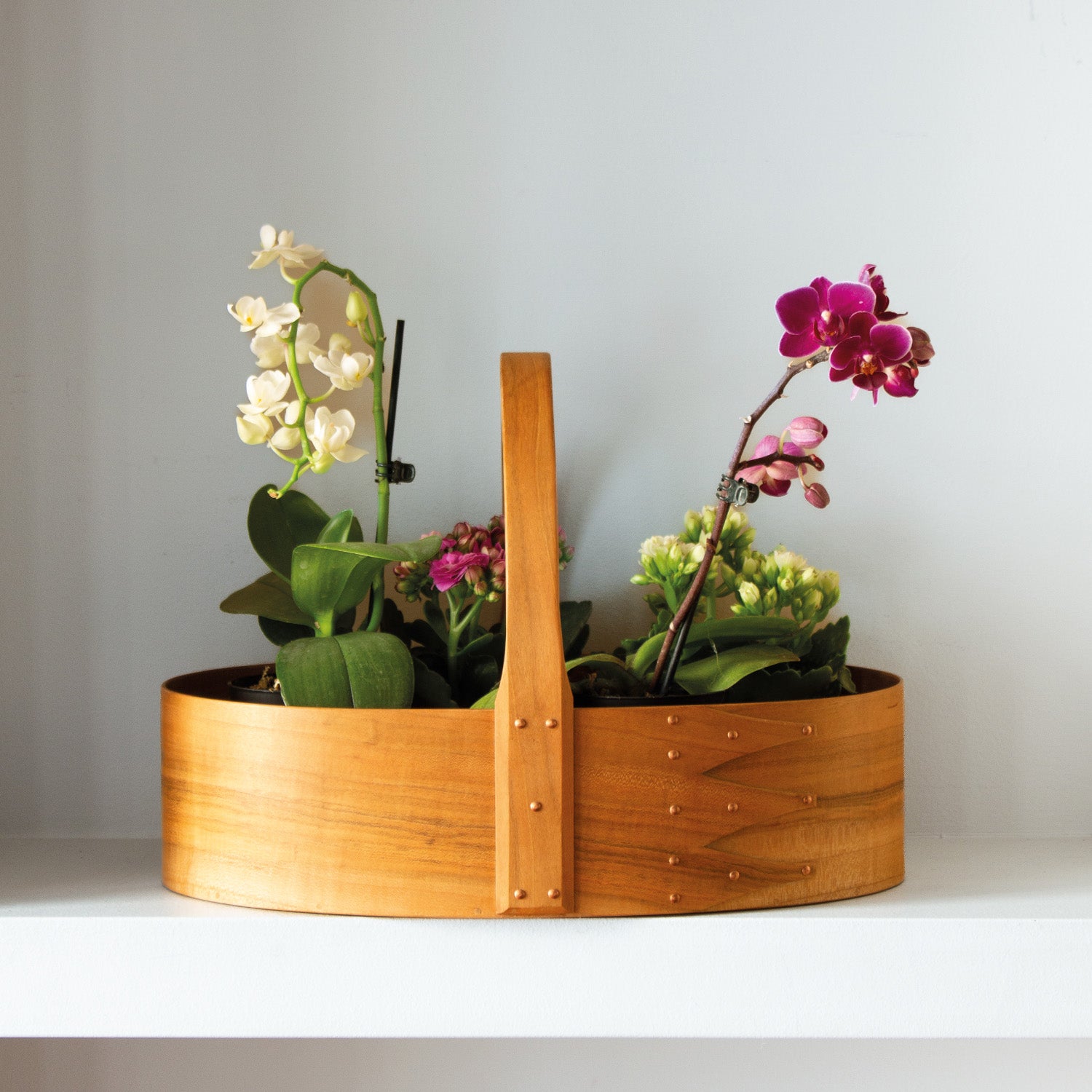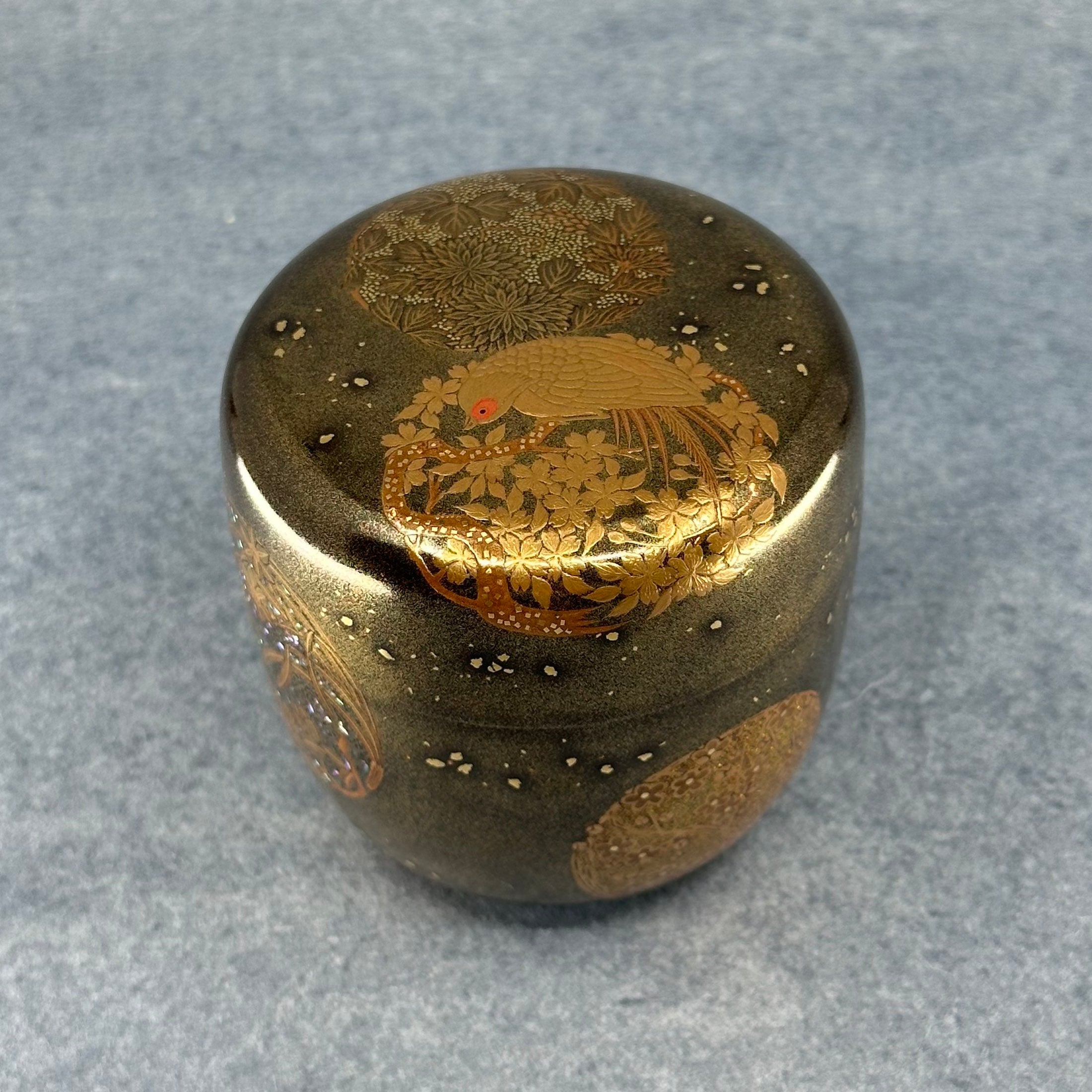

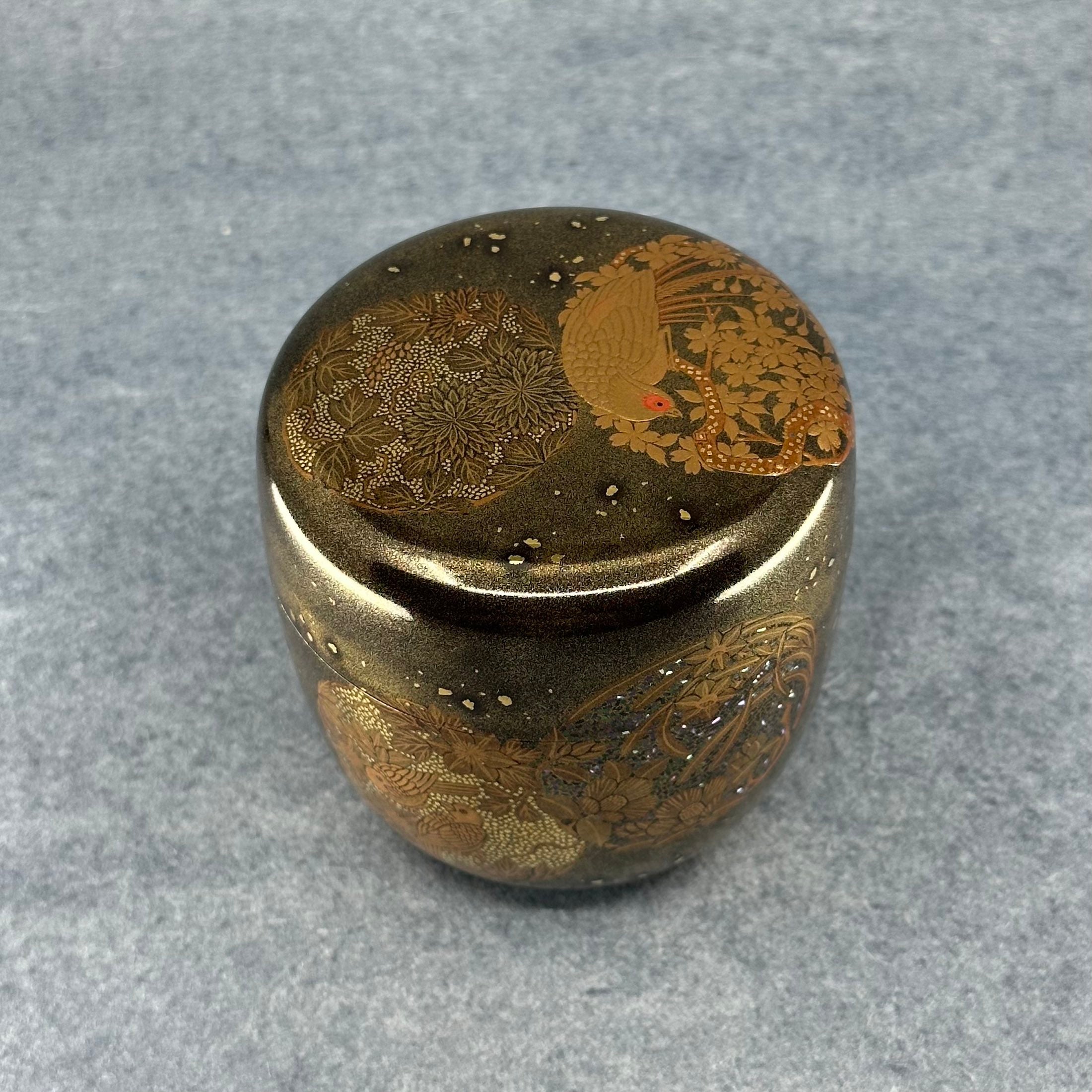
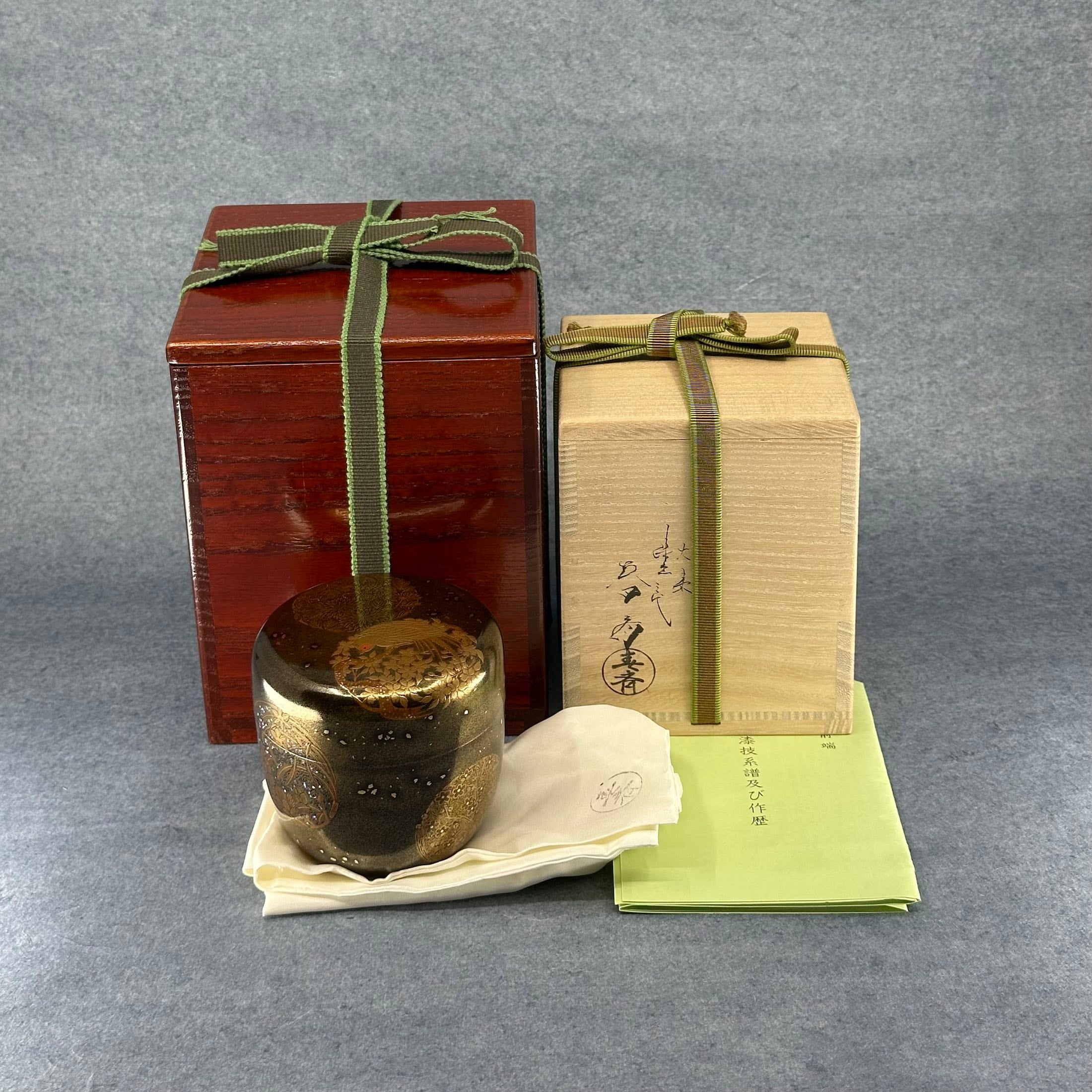
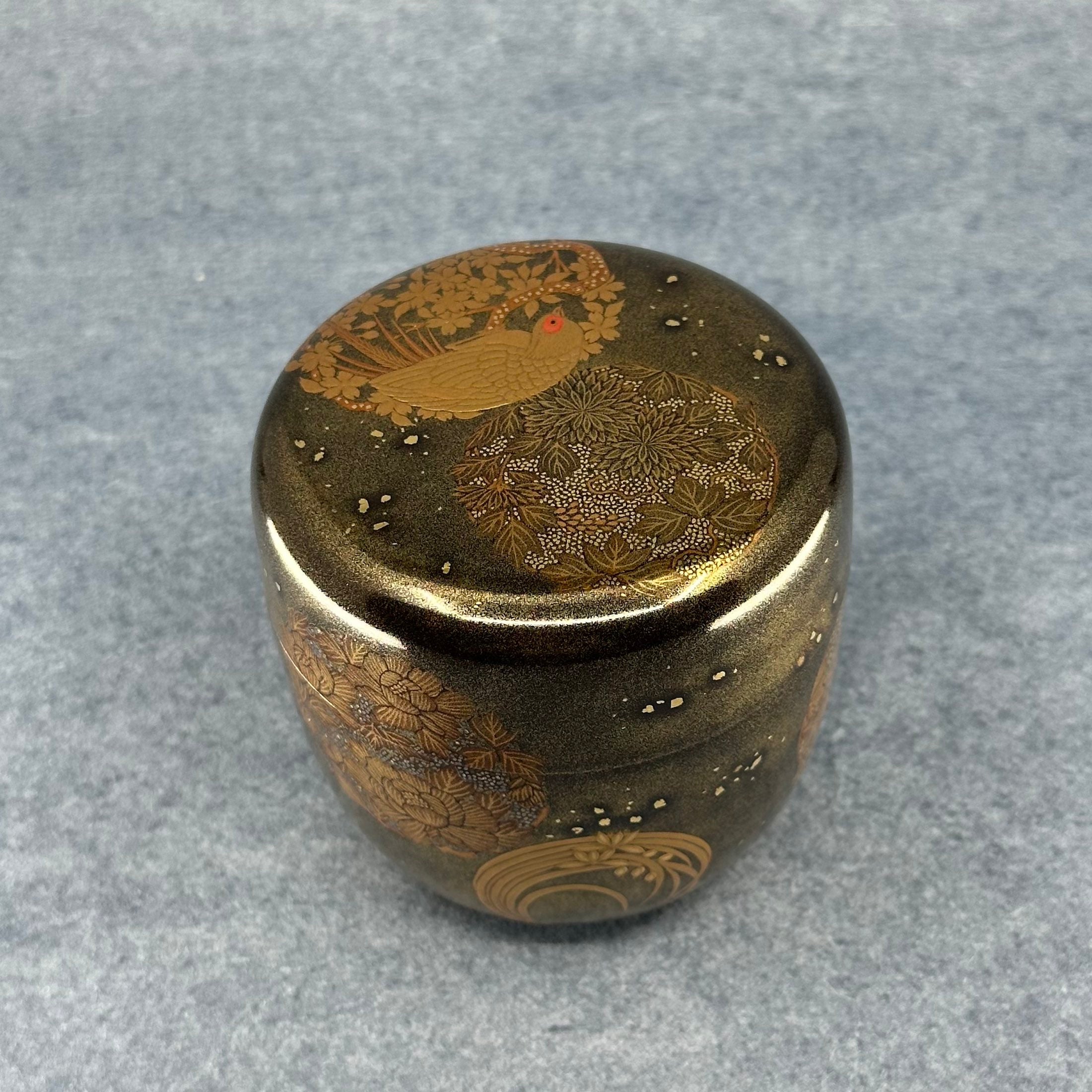

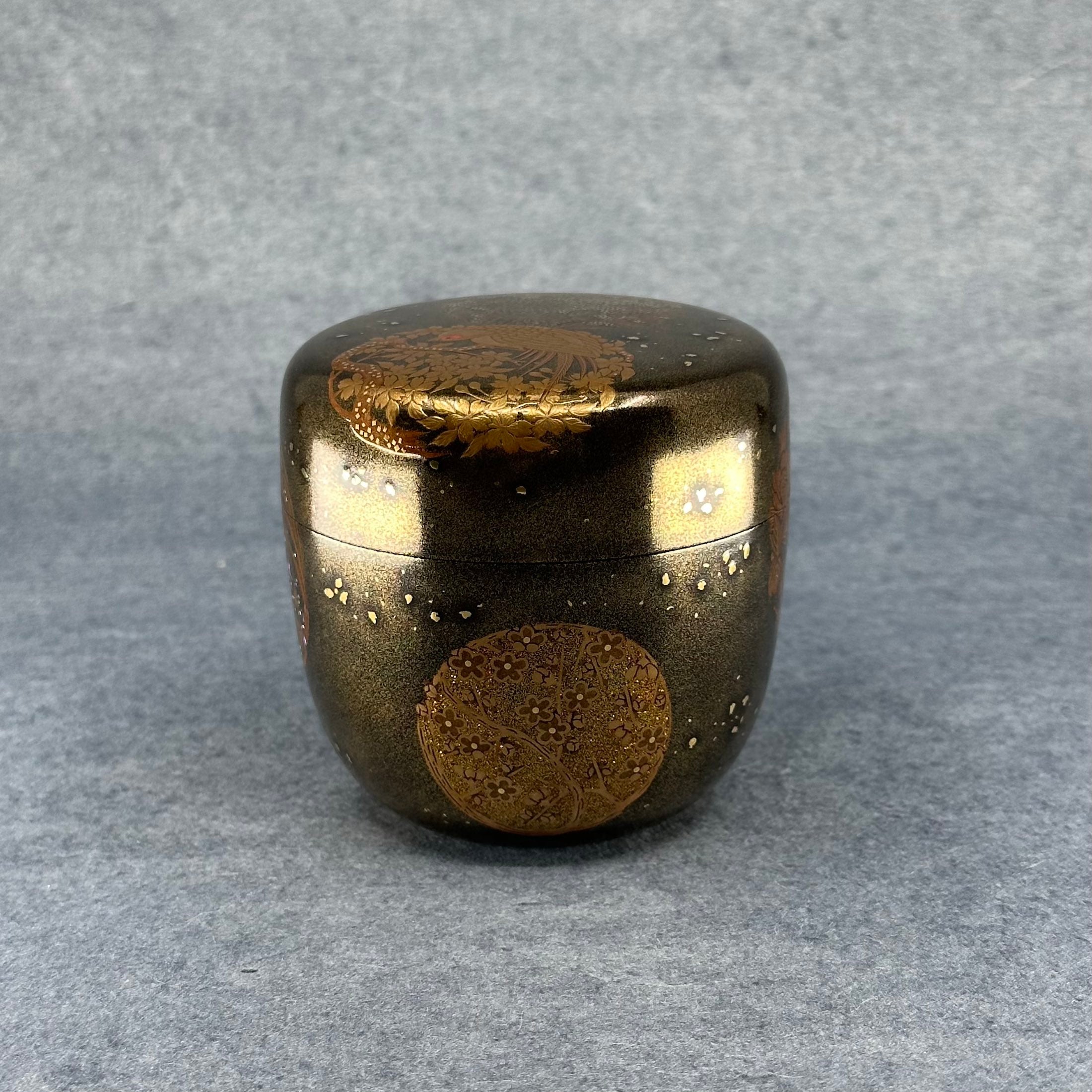
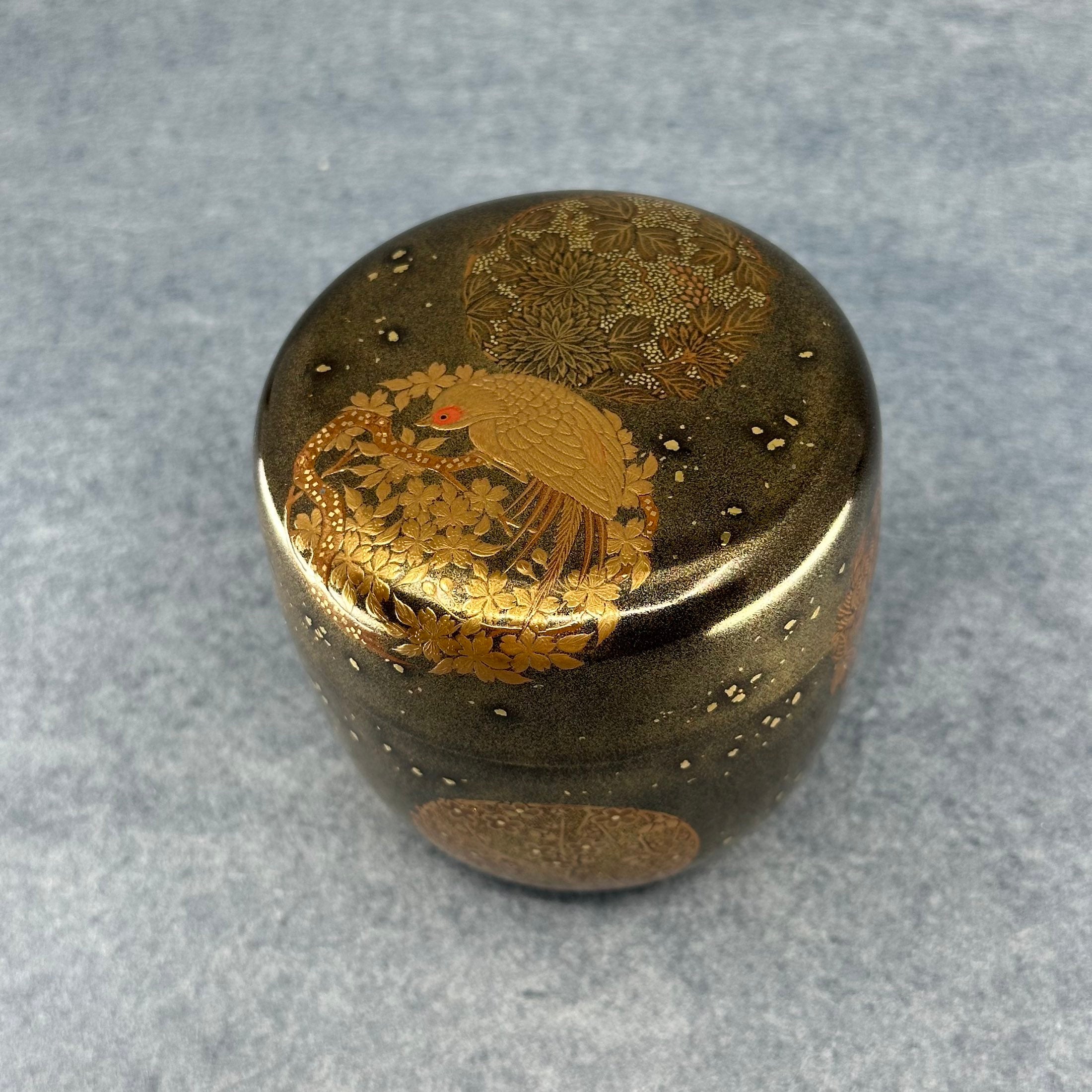

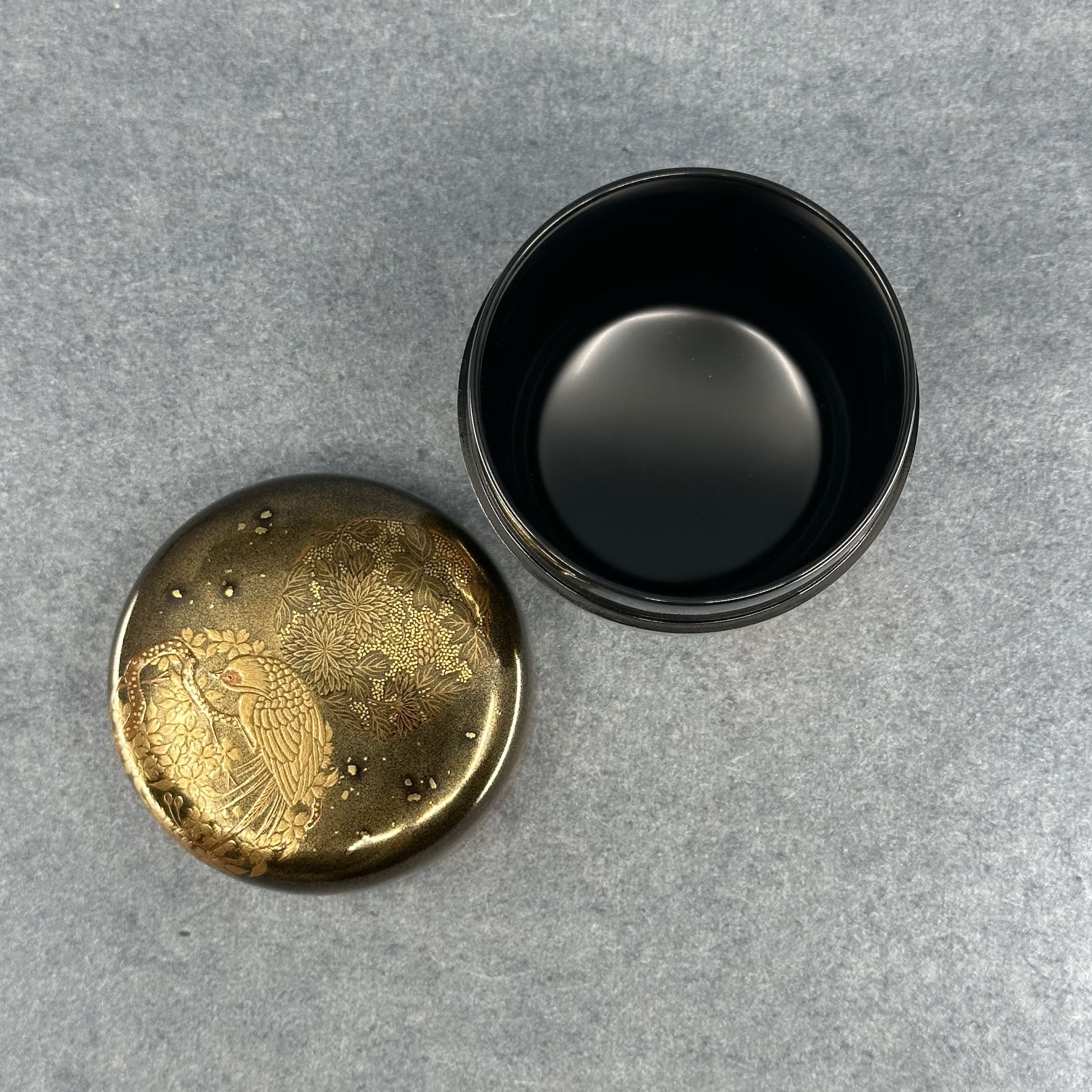
Natsume (tea caddy) lacquer and gold, hanamaru decoration by Shunsai Maehata III
A superb piece by Shunsai Maehata III (born in 1964), the third of that name in a renowned Ishikawa lineage, this large natsume (ōnatsume), used in the tea ceremony to serve usucha (lightly whipped tea), is handcrafted from turned wood and covered with urushi lacquer. The exceptionally delicate decoration unfolds in hanamaru, floral circles that organize the surface into a constellation of extremely precise and detailed emblems. The motifs are applied flat and in slight relief using a maki-e technique combining hiramaki-e and taka maki-e, with passages in togidashi maki-e. Some circles rest on very fine-grained nashiji backgrounds, punctuated with inlays of small kirikane gold squares. Beneath the decoration unfolds a background of very fine-grained togidashi-nashiji (konashiji), entirely strewn with gold particles which, polished to roiro ( (mirror finish), blend into the depth of black and create a subtle, almost nocturnal sheen. The interior is covered with a beautiful glossy black lacquer.
The hanamaru brings together several flowers and birds emblematic of Japanese culture. The ume evokes renewal and tenacity in the heart of winter. The chrysanthemum, the imperial flower, embodies longevity. The camellia, closely linked to the tea ceremony, suggests elegance and restraint. The peony represents joyful abundance. The iris, associated with seasonal protections, expresses righteousness. The sakura celebrate the brilliance of spring and the awareness of the passage of time. Birds fly through certain circles as an omen of joy and good fortune. Together, they form a wish for harmony, continuity, and gratitude toward nature throughout the seasons.
This natsume was crafted by the artisan Shunsai Maehata III, heir to the Maehata family business. Born in 1964 in Ishikawa Prefecture, he began his training in Wajima in 1982 and succeeded to the Shunsai name in 1985, perpetuating the family tradition of Kaga maki-e. The son of Maehata Gahō (Shunsai II, born in 1936), he has developed a demanding body of work focused on tea utensils, with an ornamental vocabulary characterized by meticulous drawing, the combined use of maki-e techniques, and research into materials and surface effects inherited from the Wajima school. His works have been exhibited in Japan and abroad, attesting to a practice firmly rooted in the transmission of skills within the workshop.
This is a unique example from the Heisei era (1989–2019). The piece is accompanied by a protective paulownia wood (kiribako) box, tied with a sanadahimo cord, bearing the artist's name, seal, and the title of the work, as well as a second protective box made of red lacquered wood, also tied with a cord. A protective cloth (tomonuno) bearing the artist's seal, and an informational document (shiori) detailing their profile, complete the set.
| PLACE OF MANUFACTURE | JAPAN |
| DIMENSIONS |
Diameter 7.7cm - Height 7.9cm. |
| WEIGHT | Natsume alone: 78g; Natsume + elements + box: 397g |
| MATERIALS | Wood, urushi lacquer, maki-e (gold powder), raden (mother-of-pearl) |
| STATE | In very good condition |
KNOW-HOW
Natsume (棗) are small boxes with few variations in shape and dimensions (which are codified), and which are made of Japanese urushi lacquer, welcoming the matcha tea powder during the traditional Japanese tea ceremony (chanoyu and sadō). They are magnificent objects that can be used for tea or superb decorative pieces to collect and to position individually or grouped on a pretty tray or in a display case. Modern productions are more often made of resin and not lacquer, and of molded wood powder or plastic. We only offer authentic traditional natsume in real Japanese urushi lacquer made according to the rules of the art. These objects are rare and precious, they are likely to increase in value. Read our article on natsume >
Traditional Japanese lacquer, urushi, comes from the sap of the lacquer tree (Rhus Verniciflua), which flows after incision of the bark. It is a very precious material, a tree will give a maximum of 200ml of sap in its life, which is worked by specialized craftsmen. It takes many operations, slow and meticulous, and several months of work to bring real lacquer objects to life. It is the oldest craft in Japan! Initially used to protect and waterproof objects, this immutable craft has become an art of extreme sophistication. If you want to know more about the art of Japanese lacquer, you can read our dedicated article > .
DELIVERY
Delivery
Free delivery in mainland France for purchases over €200. Orders are generally dispatched within 2 working days, except in special cases, as indicated in the banner at the top of the website.
Precious items are wrapped in beautiful fabric, beautifully knotted according to the precious Korean art of pojagi. Some exceptions apply, especially if the items are large. Learn more >
Detailed delivery information is available via this link >
Your invoice will be sent by email
Payment methods
By card (Stripe operator): Visa, MasterCard, Discover, American Express.
Secure card payment with 3D Secure.
By PayPal, Apple Pay, Google Pay and Shop Pay
Returns and exchanges
14 days to change your mind.
CARE INSTRUCTIONS
Clean with a very soft cloth to avoid scratches, soaked in a little warm water if necessary (never soak your lacquer objects). No microwave, dishwasher, dryer. Do not expose to direct sunlight for a long time (risk of discoloration). If the atmosphere is very dry and very hot, and to avoid the risk of cracking, you can place a glass filled with water next to your lacquer object.
Choose options
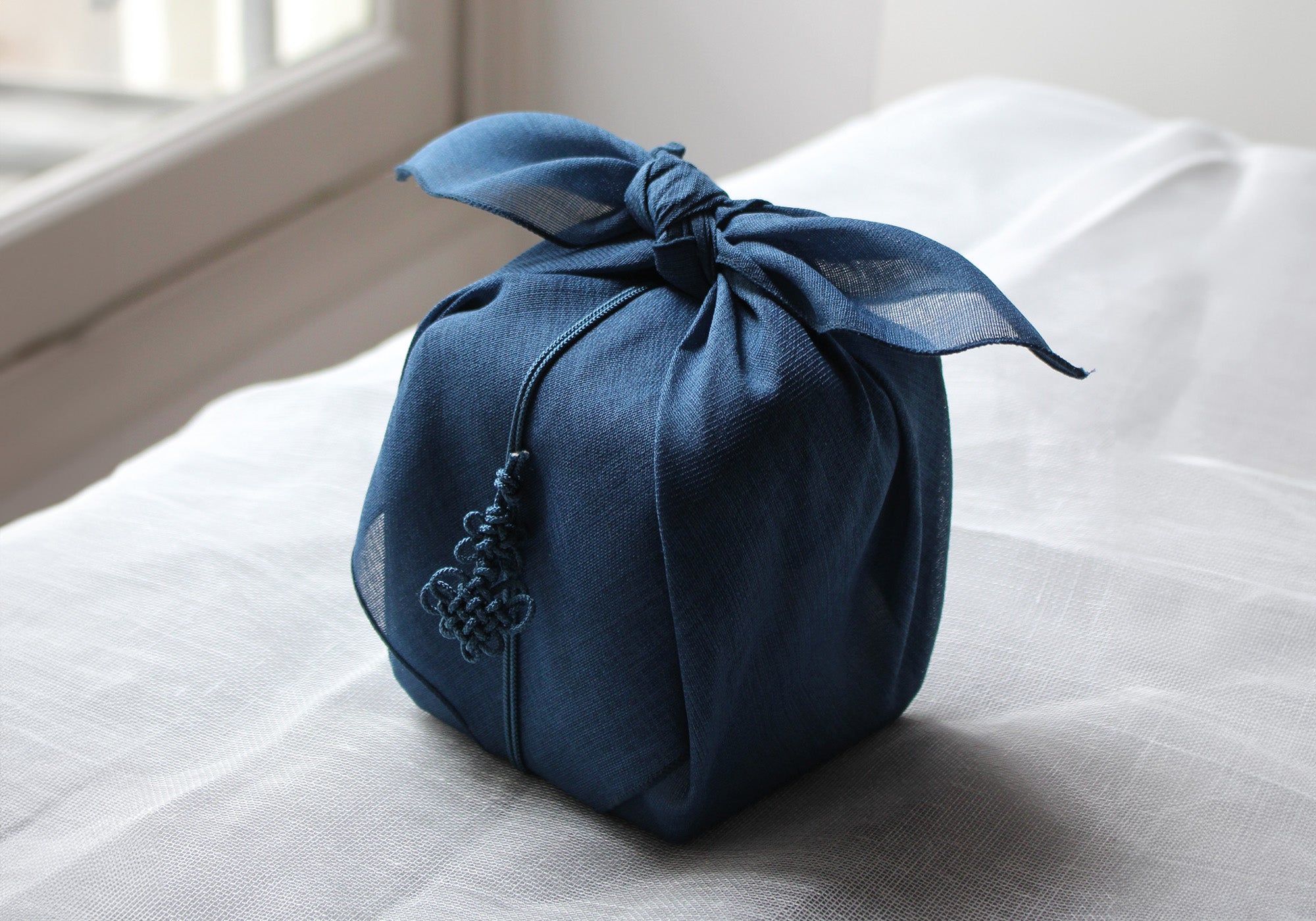
The art of wrapping
The exceptional items are wrapped in a beautiful fabric beautifully knotted using the little-known art of Korean pojagi and decorated with a delightful maedup (Korean ornamental knot). Details and conditions >





